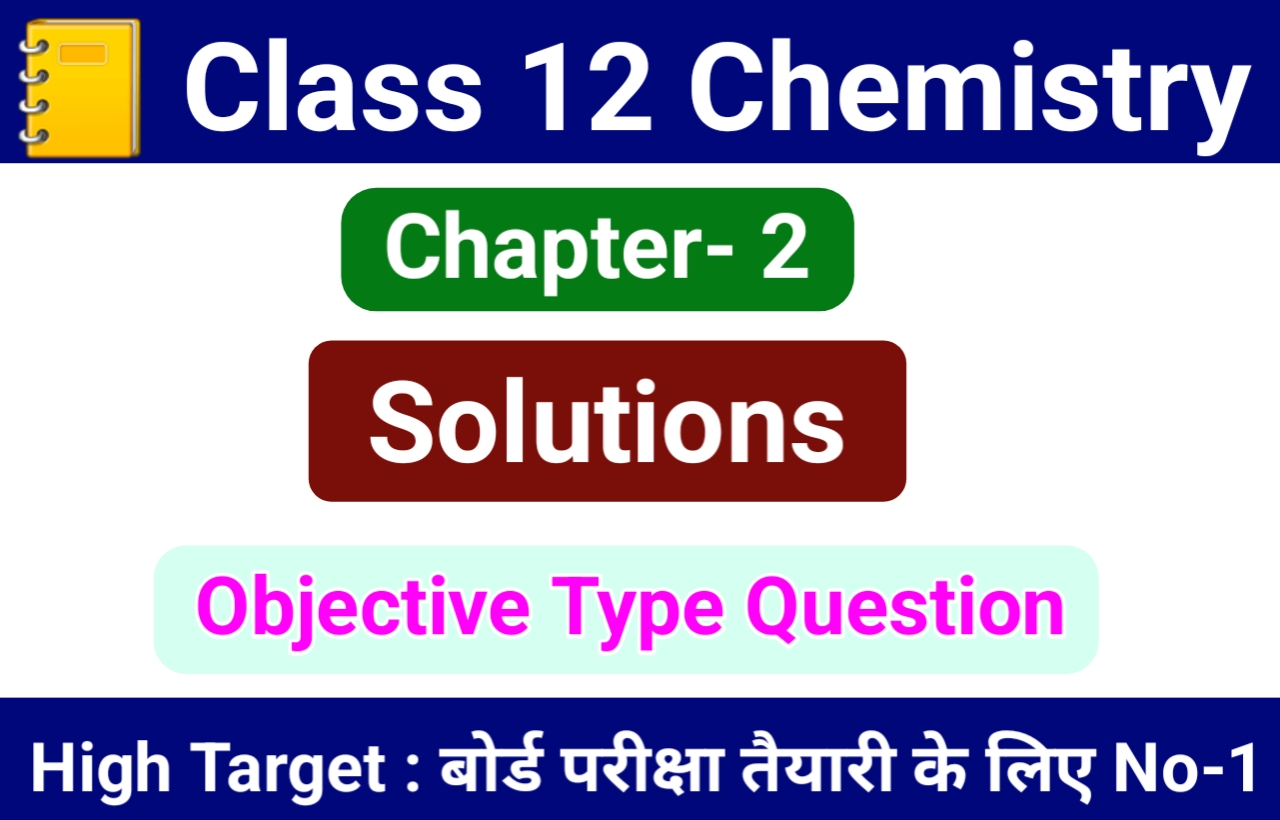
2. SOLUTION Objective
2. SOLUTION
1. If 2 gm of NaOH is present is 200 ml of its solution, its molarity will be
(A) 0.25
(B) 0.5
(C) 5
(D) 10
2. 234.2 gm of sugar syrup contains 34.2 gm’df sugar. What is the molal concentration of the solution ?
(A) 0.1
(B) 0.5
(C) 5.5
(D) 55
3. Atomic mass is equartoo
(A) number of electrons of an atom
(B) sum of the numbers of electrons and protons of an atom
(C) sum of the numbers of neutrons and protons of an atom
(D) none of these
4. How much oxygen is dissolved in 100 mL water at 298 K if partial pressure of oxygen is 0.5 atm and KH = 1.4 x 10-3 mol/L/atm ?
(A) 22.4 mg
(B) 22.4 g
(C) 2.24 g
(D) 2.24 mg
5. The law which indicates the relationship between solubility of a gas in liquid and pressure is
(A) Raoult’s law
(B) Henry’s law
(C) Lowering of vapour pressure
(D) Van’t Hoff law
6. Partial pressure of a solution component is directly proportional to its mole fraction. This is known as
(A) Henry’s law
(B) Raoult’s law
(C) Distribution law
(D) Ostawald’s dilution law
7. Which of the following solutions shows positive deviation from Raoult’s law ?
(A) Acetone + Aniline
(B) Acetone + Ethanol
(C) Water + Nitric acid
(D) Chloroform + Benzen
8. A plant cell shrinks when it is kept in a
(A) hypotonic solution
(B) hypertonic solution
(C) isotonic solution
(D) pure water
9. The relative lowering in vapour pressure is proportional to the ratio of number of
(A) solute molecules to solvent molecules
(B) solvent molecules to solute molecules
(C) solute molecules to the total number of molecules in solution
(D) solvent molecules to the total number of molecules in solution
10. A solution containing 10.2 g glycerine per litre is isotonic with a 2% solution of glucose. What is the molecular mass of glycerine ?
(A) 91.8 g
(B) 1198 g
(C) 83.9 g
(D) 890.3 g
11. What weight of glycerol should be added to 606 g of water in order to lower its freezing point by 10°C ?
(A) 496 g
(B) 297 g
(C) 310 g
(D) 426 g
12. The osmotic pressure of a solution can be increased by
(A) increasing the volume
(B) increasing the number of solute molecules
(C) decreasing the temperature
(D) removing semipermeable membrane
13. what will be the degree of dissociation of 0.1 M Mg(NO3)2 solution if van’tHoff fctor is 274 ?
(A) 75%
(B) 87%
(C) 100%
(D) 92%
14. At equilibrium the rape of dissociation of a solid solute in a volatile liquid solvent is
(A) less than the rate of crystallisation
(B) greater than the rate of crystallisation
(C) equal to the rate of crystallisation
(D) zero
15. Maximum amount of a solid solute that can be dissolved in a specified amount of a given liquid solvent does not depend upon
(A) temperature
(B) nature of solute
(C) pressure
(D) nature of solvent
16. Which of the following aqueous solutions should have the highest boiling point ?
(A) 1.0 M NaOH
(B) 1.0 M Na2SO4
(C) 1.0 M NH4NO3
(D) 1.0 M KNO3
17. The values of van’t Hoff factors for KC1, NaCl and K2SO4, respective are
(A) 2, 2 and 2
(B) 2, 2 and 3
(C) 1, 1 and 2
(D) 1, 1, and 1
18. A solution has an osmotic pressure of 0.0821 atm.at 300 K. Its concentration should be
(A) 0.66 m
(B) 0.32 m
(C) 0.066 m
(D) 0.033 m
19. A zeotropic mixture of HCI and H2O has
(A) 48% HCl
(B) 22.21 HCl
(C) 36% HCl
(D) 20.2%
20. Osmotic pressure can be increased by
(A) Increasing temperature
(B) decreasing temperature
(C) increasing volume
(D) none

